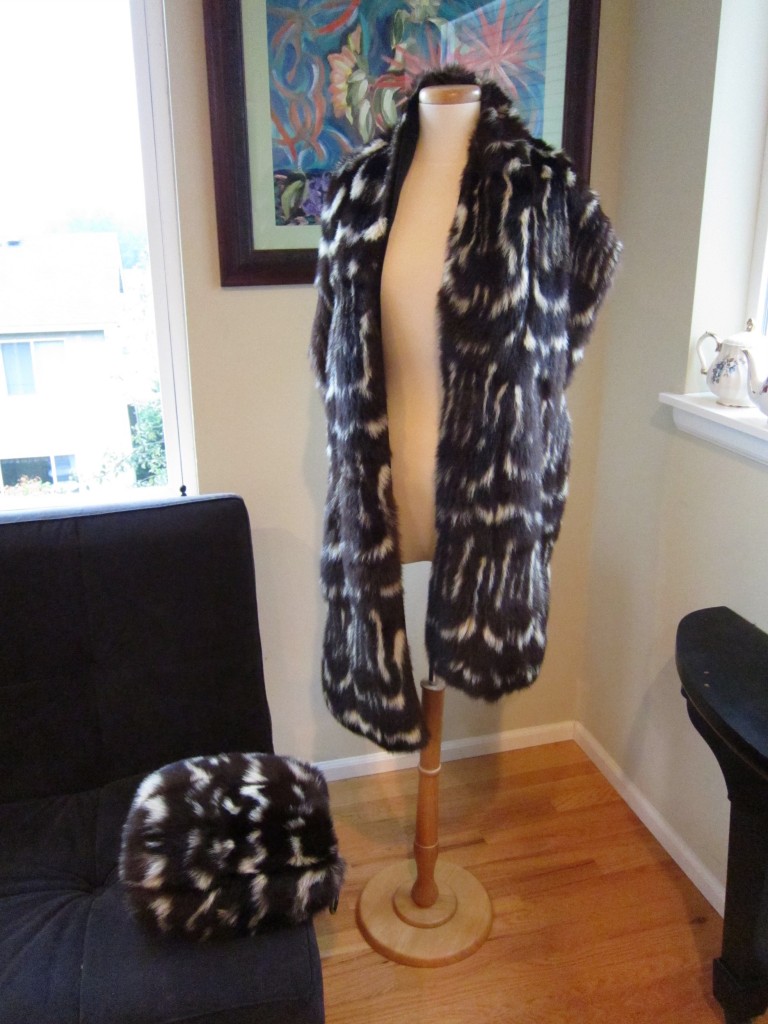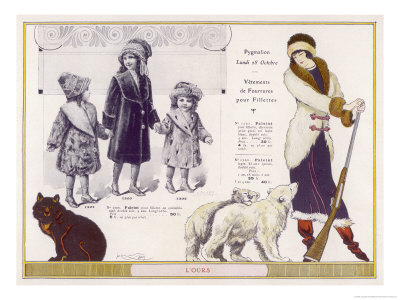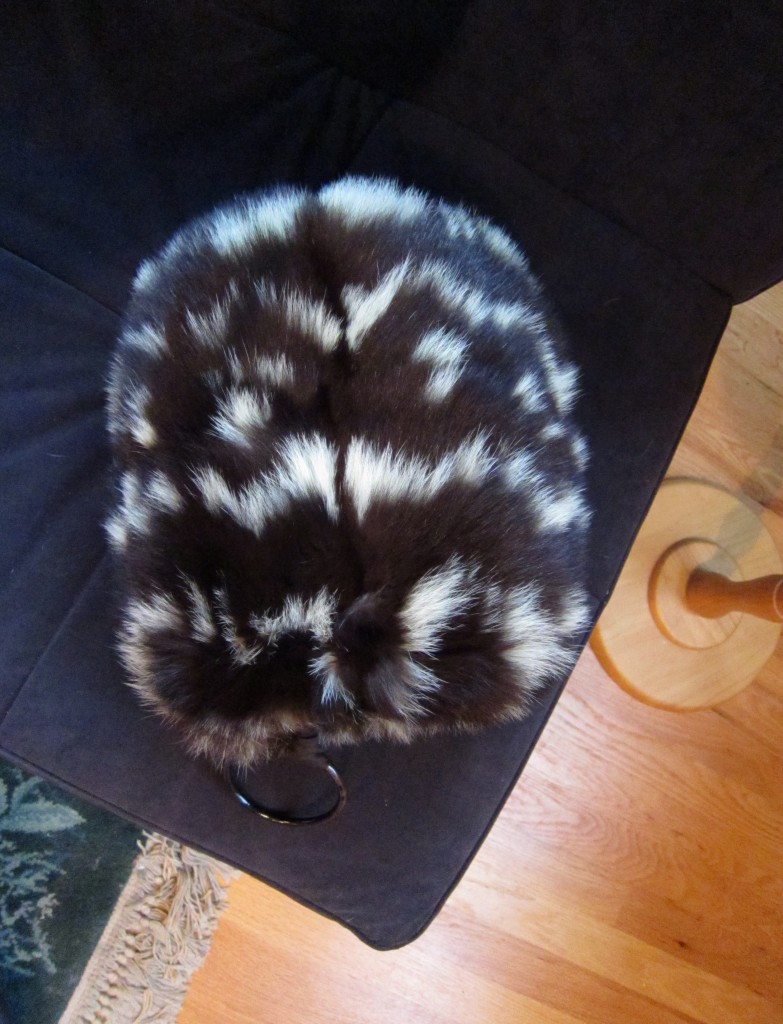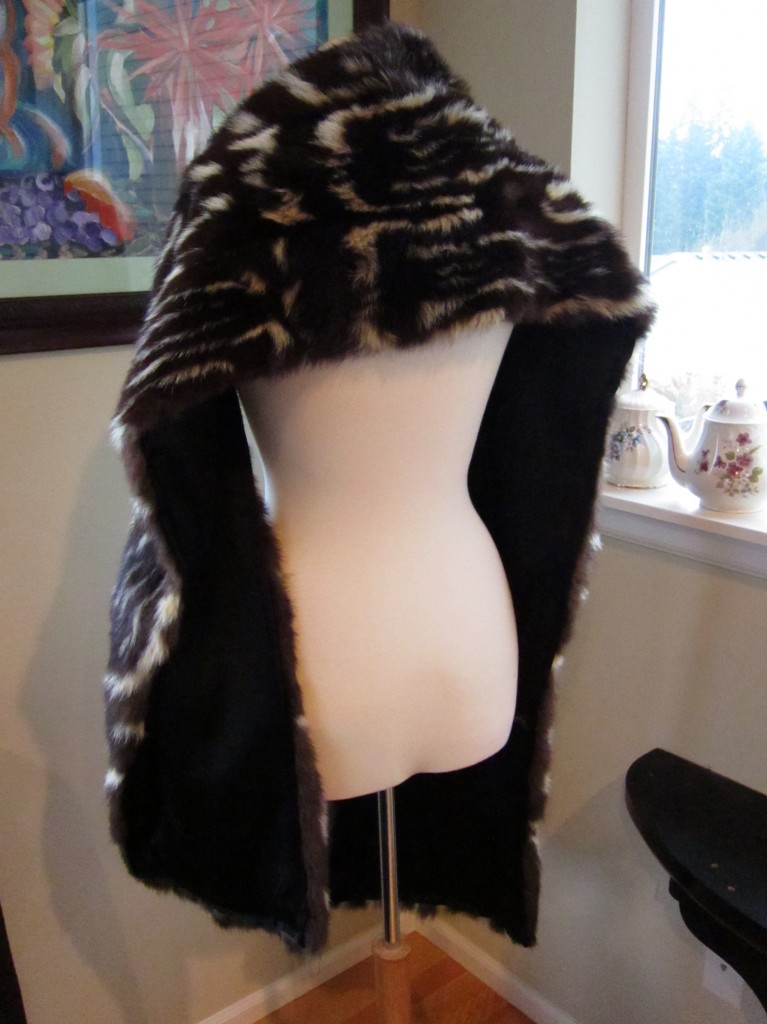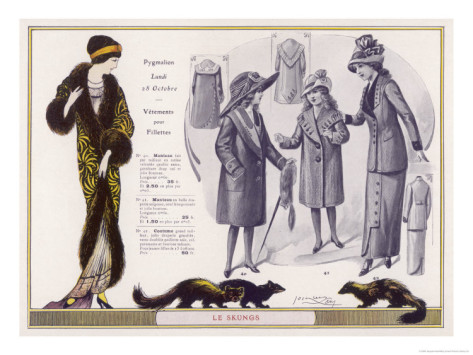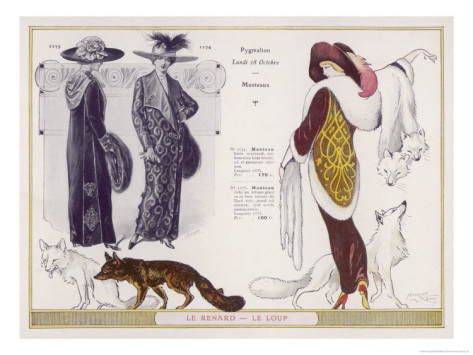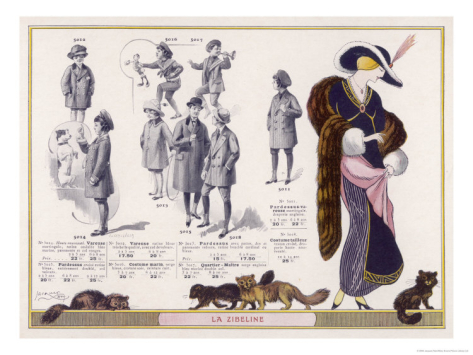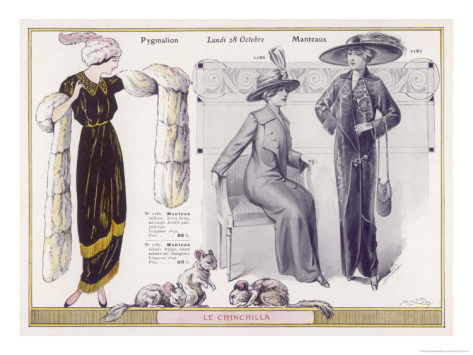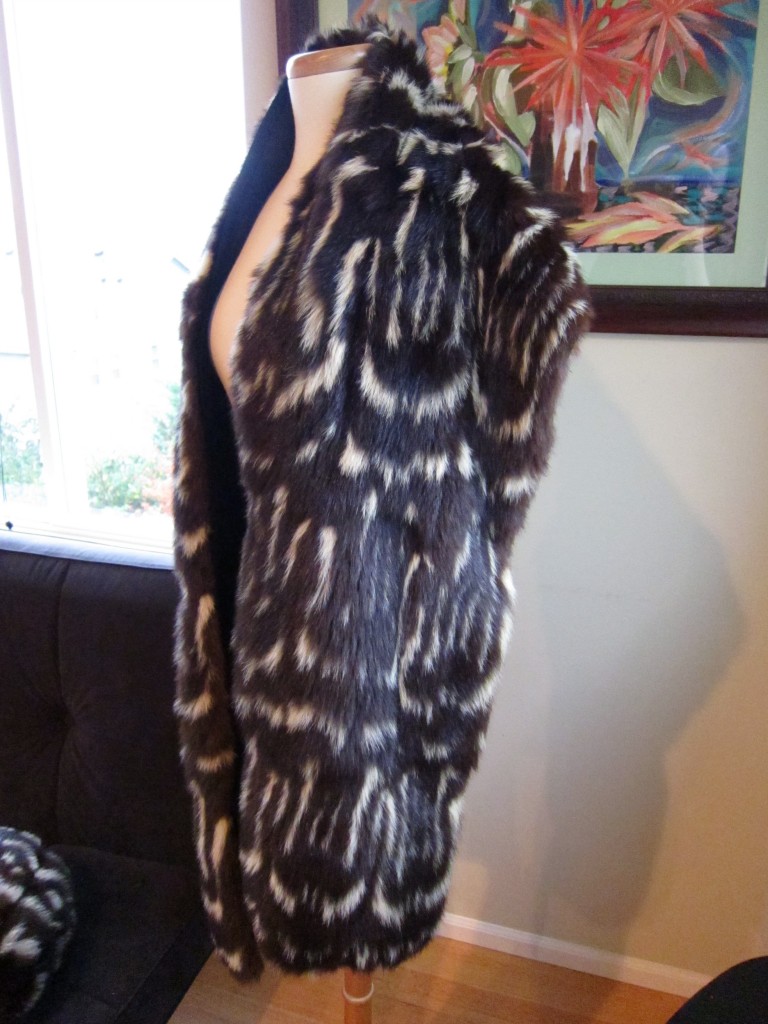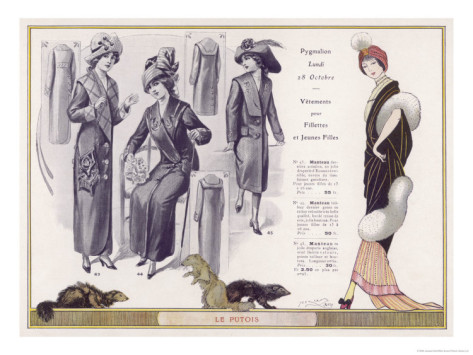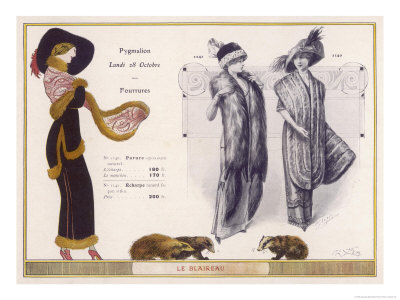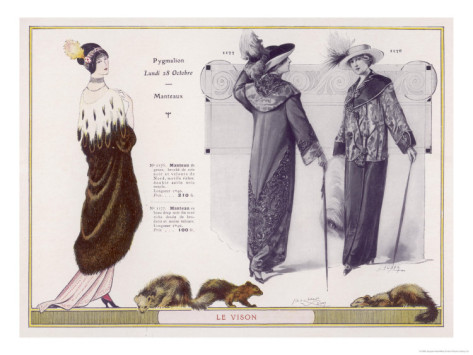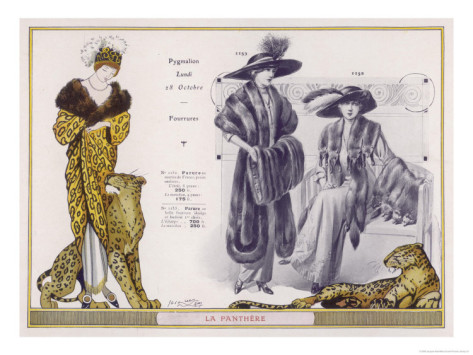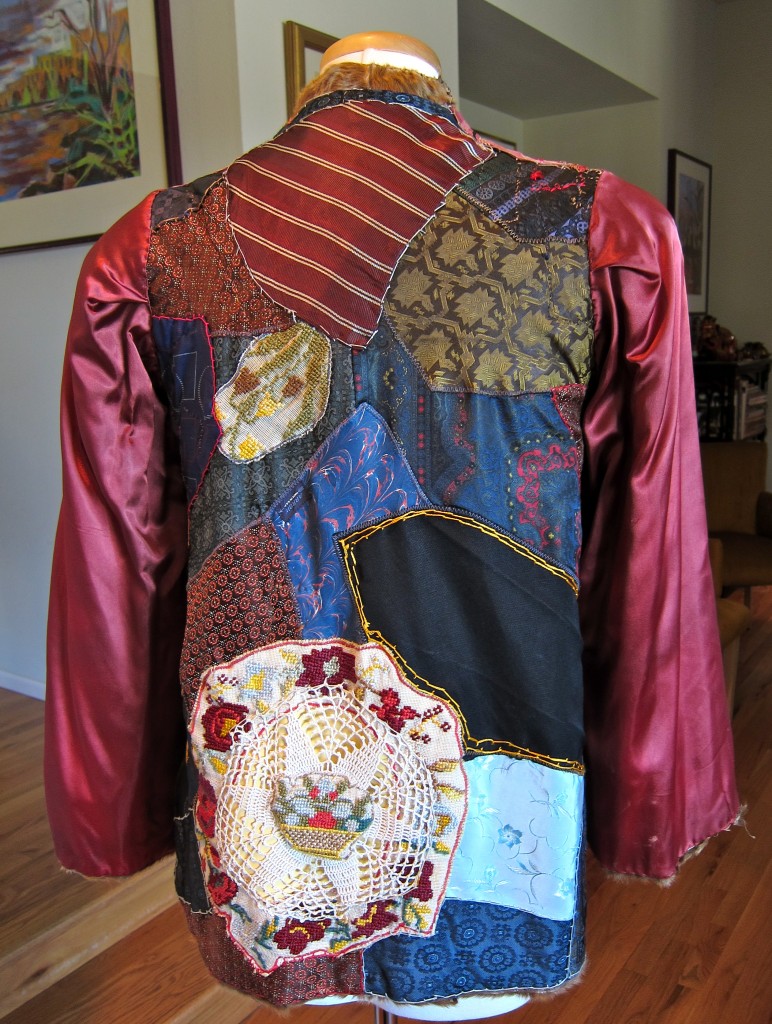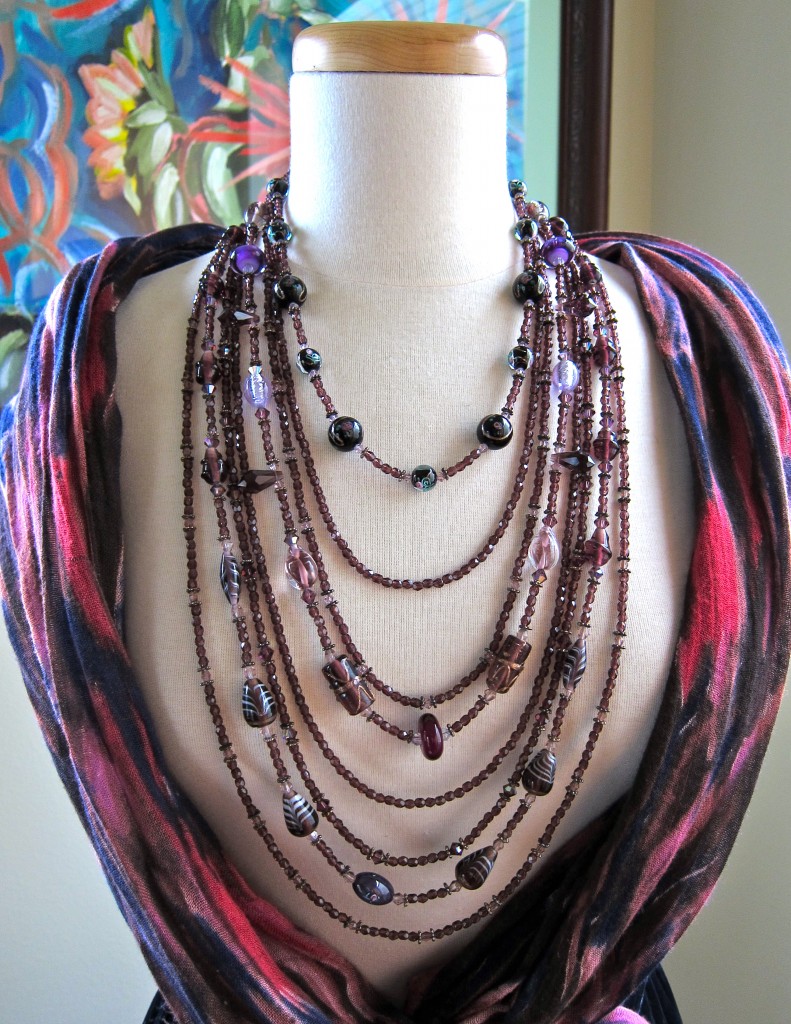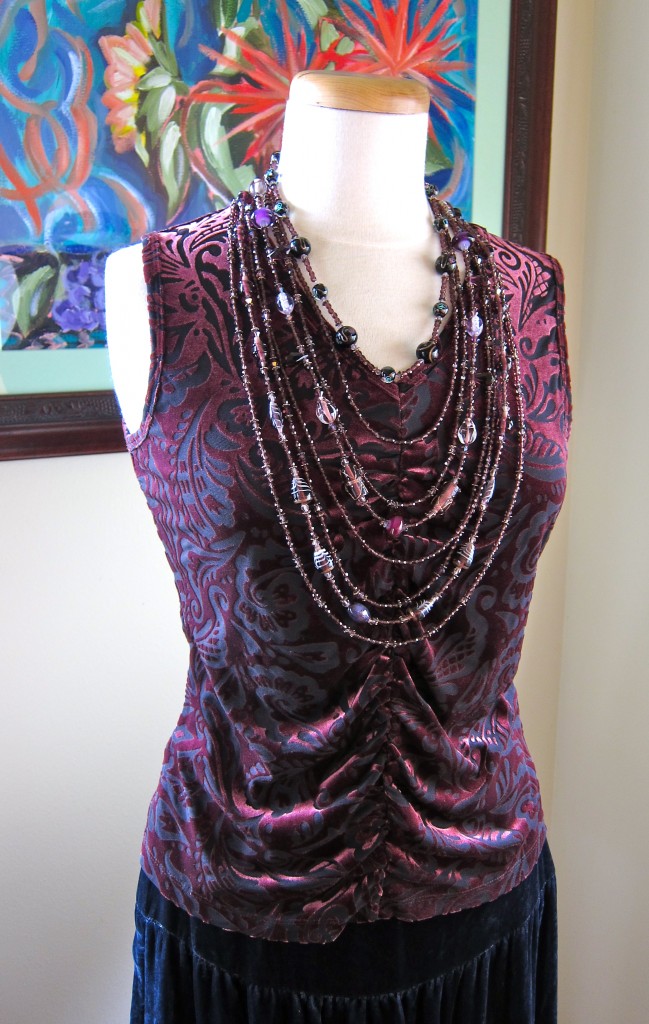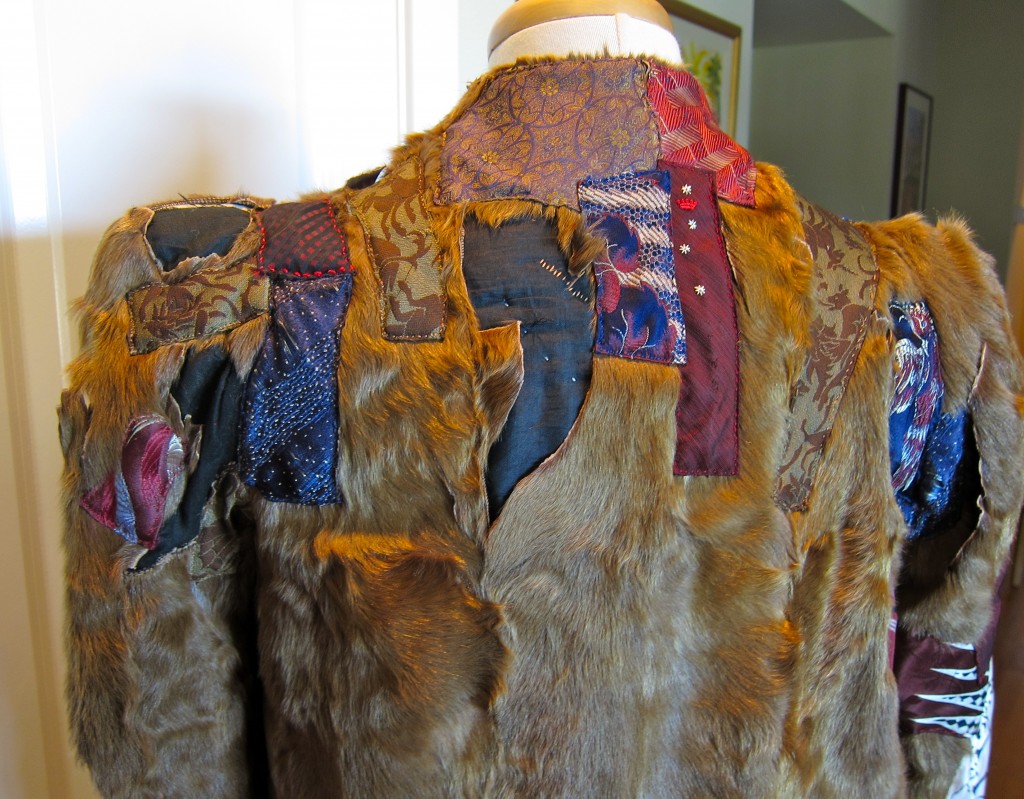I have an extensive collection of vintage furs and people always wonder what kinds of furs they are. Some are quite unusual and seldom seen these days. I have decided to research all of them thoroughly and have consulted a professional furrier Rene Vogel for authentification. Mr. Vogel is a second generation Swiss custom furrier who was the house furrier for Nordstroms when they were still selling furs and I. Magnin when they were still in business and selling furs.
This beautiful rich vintage cream colored circa 1955 stole from I.Magnin initially had me puzzled. The original owner thought it was beaver, but I had done a school report in Portland OR, when I was in the fourth grade, on beavers and their fur and I was not sure she was right. Sheared beaver is silky soft like butter and in my opinion this fur had a different feeling. So I took it to Rene Vogel, the furrier in Seattle, and he explained that it is, of all things, sheared, bleached and dyed raccoon!

Cream Colored Vintage Sheared, Bleached and Dyed Raccoon Fur Stole Shown with Vintage Sheared Brown Beaver Fur Muff Purse for Comparison Purposes
It is a dense fur and very soft, just not as slippery silky as beaver. But the look is similar to sheared beaver so it is easy to see how the original owner would have thought beaver. Here is a picture of the raccoon shawl with my vintage sheared brown beaver muff purse placed beside it for comparison. They actually look very good together and I feel they could be worn together.
The cream colored raccoon shawl was purchased at I.Magnin by a family friend of ours who wore it before and directly after her December 1955 winter wedding as part of her wedding and honeymoon ensembles. She told me she wore it over her green velveteen evening dress when she arrived for her rehearsal dinner, to the church over a cream colored wool suit when she arrived to get prepared for her wedding ceremony, and again over the cream wool suit when she departed for her honeymoon. She wore a formal cream satin wedding dress for the ceremony itself, but did not use the fur stole with it. The cream raccoon fur stole was her winter cold weather wrap for all her wedding related events and parties. She was a prominent Seattle socialite whose outfits and activities were chronicled regularly in the Seattle Times Society Section of the 1950s through 70s. She wore very glamorous clothes and kept a scrap book of photos of herself and her husband at all the events they had attended. She had saved many of the clothes as well.

When I Wear This 1955 I.Magnin & Co. Cream Sheared Raccoon Stole I am Wrapped in the Warmth of a Gorgeous Vintage Fur & the Memories of the Elegant Friend Who Gave it to Me
I.Magnin was her favorite store and she purchased almost all her clothes there. She relied on them for the level of taste and elegance she wished to project. She told me many stories about her shopping trips to I.Magnin and the items she had acquired there and gave me this stole, several Odette Barsa lingerie ensembles, and other items she had acquired there over the years. She was extremely sad when I.Magnin closed!
And when Frederick & Nelson closed! It was the end of an era and she was very aware that she was part of that era. It made her happy that I knew about I.Magnin and appreciated their level of style as much as she did.
One day while thrifting I found several vintage items ~ a couple of cashmere sweaters and wool skirts in her size and in very good condition and I bought them for her ~ she was absolutely ecstatic to have some “New clothes from our favorite store!” She was so happy when I gave them to her she was jumping up and down at the age of 86 like a 16 year old girl would have! This lady was a very good friend of my mothers and, as a result of that, she and I became very good friends. We had lots in common! Consequently this beautiful soft cream colored shawl is not only wonderfully cozy it is full of warm memories of special times with a very special person for me. She had no children so I was like the grand daughter she wished she had had.

The Cream Sheared Raccoon Stole From I. Magnin & Co. 1955, is Lined in Heavy Beige Colored Silk and Has Two Silken Pockets, One at Each End, in Which to Put Your Hands to Keep Them Warm. These Strategically Placed Pockets Also Provide a Way to Hold the Shawl Close to Your Body to Gracefully Encircle Your Shoulders ~ the Way We See Them in Glamorous Circa 1950s Fashion Photographs.
The sheared cream raccoon stole is lined in heavy beige silk and has two silken pockets, one at each end, in which you can put your hands to keep them warm and to hold the shawl together in front of you while you allow it to slide gracefully down low around your shoulders and encircling your body the way it is done in glamorous 1950s era fashion photographs. This works well. When I have a photographer present I will model it and show how that is done in person. I plan to photograph all my furs styled and coordinated with proper outfits on myself or other models after I get them all identified by type and era.

The Creamy Sheared Raccoon I. Magnin & Co. Fur Stole is Like Something a Hitchcock Heroine Would Have Worn in the Daytime Over Her Pastel Cashmere Separates and at Night With Pale Silk Brocades in San Francisco in the 1950s!
This is such a rich looking garment. There is a lot of depth in the creamy color and a slight striping effect as you can see in the photographs. It reminds me of the Alfred Hitchcock heroines ~ of Grace Kelly, Tippi Hedren, Eva Marie Saint, and Tuesday Weld ~ with their pale cashmere coats, cream and beige cashmere sweaters, pastel pencil skirts, and French rolled coiffed blondness and, of course, pale fur coats and stoles over cream colored brocade silk suits and dresses with white kid gloves. It reminds me of San Francisco in the 1950’s ~ where I. Magnin & Co. was founded and had their first elegant store.

A Circa 1950s Label From The City of Paris Department Store in San Francisco For a Hat From Their Exclusive Midenette Millenery Salon Which Carried One of a Kind Couture Hats imported From France
And of The City of Paris, another sophisticated and elegant department store in downtown San Francisco, with an incredible French perfume department and a fabulous ornate mezzanine overlooking the ground floor and salons for each designer they carried arranged in elegant salons branching off along the mezzanine. That store was magnificent, like an ornate theater in Paris with crystal and gold gilt and mirrors everywhere you turned! A miniature version of Versailles transported to San Francisco to feed the imaginations of western American women who really wanted to be in Paris.

The Lining and Pockets Are Made of a Beige Silk to Tastefully Coordinate With the Creamy Sheared Raccoon Fur Stole
After her marriage and honeymoon my friend occasionally wore her Creamy Sheared Raccoon Stole from I. Magnin & Co. to the Theater and to the Olympic Hotel in Seattle for Holiday Events. She recalled wearing it when she took a trip to San Francisco and dined at the famous restaurant at the Top of the Mark and attended a performance of The Royal Ballet from London featuring Margo Fonteyn and Rudolf Nureyev at the War Memorial Opera House. That was in 1962.
She acquired additional furs over the years so this one was not used often, just for special events, mostly around the Christmas and New Years Holidays. She said it was a good wrap to wear to winter parties where there were slight chills running through buildings but you still wanted to be glamorous and feel elegant.

The Creamy Color of This 1955 Sheared Raccoon Stole From I. Magnin & Co. Coordinates Beautifully with Pearl Jewelry and White Kidskin Gloves Making Any Color Dress Look Instantly Put together. The Vintage Muff in This Photograph is Sheared Beaver. It is Quite a Bit Older Than the Stole, But I Like the Way They Look Together. The Muff Will Be Discussed in a Future Post.
She pointed out that the cream color of this stole goes very well with pearls. You can wear it over any color dress with white kidskin or silk gloves and pearly jewelry and instantly look put together. This was how women thought about dressing in her day. I’m planning to use it to keep warm, look good and have a conversation piece at Holiday Cocktail Parties this winter.

This Creamy Sheared Raccoon Fur Stole from I. Magnin & Co.is 57 Years Old and is Still in Excellent Condition Because it was Professionally Cleaned When Needed and Kept in Cold Storage During the Summer Months by its Original Owner
This stole is in good condition after 57 years because it was well care for. The original and only owner before I acquired it put it in fur storage every summer and had it cleaned when recommended by her furrier. It is a good example of how long furs last when properly cared for. I am the future generation and I really appreciate the fact that she did this. The color is creamy as you can see in the photos. Because we did not see it when it was new we do not know if it was originally this color or lighter. There is a possibility that it may have darkened due to oxidation as it aged. There are no sections of distinctly different shades or color from one part of the piece to the next. In other words the current color and effect is uniform throughout the stole.
As described in the opening paragraph of this post I had this vintage fur stole inspected by Rene Vogel the professional Seattle furrier. Mr. Vodel identified the fur to be Sheared Bleached and Dyed Raccoon as stated above. He has decades of experience having been in the fur business himself since 1969, as well as growing up around it because his father was also a furrier. He is very familiar with the styles and types of furs worn over the past decades in both Europe and America. Rene Vogel now works independently by appointment and his business is Furs by Rene. He is located in the Seattle area. He can be reached at 425- 322-9638. He does custom designs, restyles, alterations, repairs, storage and cleaning. His email is rdcvogel@msn.com




